I know I’ve gone down a bit of an apostolic church perfume rabbit hole lately. I won’t pretend it’s not because I am also going through a bit of an apostolic church rabbit hole lately, but I would prefer to have the emotional details of this spiritual journey remain implicitly told through my evolving relationship to perfume. This is all to say, I now believe I have smelled almost every single church incense perfume currently in production, not counting those serendipitous associations laypeople make between generally smoky-amber ambers and their own contrived memories of mass or liturgy. I won’t pretend I don’t harbor a bit of judgment for when someone says that something like CK Obsession smells like a church (I would say it leans more Duran Duran album cover art), only because having now gone to many different Catholic and Orthodox services in which frankincense and myrrh were burned, it is a very specific smell. My olfactory fascination with how this smell functions has almost begun to rival my original oral fixation – and the namesake of this blog – the smell of lipstick. While I have spent literal years attempting and failing to write the perfect article summarizing my thoughts and recommendations on perfumes that smell like waxy cosmetics, I now feel I am ready to offer you my thoughts on pretty much every perfume worth buying for those looking to smell like the most holy of smells. Sit down, genuflect, or prostrate yourself, and listen up, for the word is to be revealed.
Kumba Maade, Frankincense and Myrrh
I’m going to start small and work up to what I feel to be the true masterpieces of the genre, so right off the bat this is both a perfume I have written about before, and something you can get for like ten dollars at most US Whole Foods. In fact, a number of perfumes here I have written on previously both on Twitter and in my now nearly year and a half old writeup on incense notes. I think what I have to say there holds up for the most part, so when necessary I will excerpt it, adding on new addendums I have thought up in the meantime.
“another perfume oil, this time less small-batch perfumery and whole-foods core hippie products. however i find this to be an amazing option if you’re looking to smell like a haunted church on a budget. a mini bottle comes at only $10 USD, and can be found at most local whole foods via their technocratic partnership with amazon. the incense here is extremely heavy, and wears almost like a distillation of a single ingredient used in the creation of avignon. somewhat antique shop and somewhat yoga studio, the myrrh comes on very sharp and sweet whereas the frankincense lays balmy and thick. this is not a huge gothic cathedral but rather, the pews of your local worship hall off I-95. it’s nothing crazy but hey, it’s endearing and it gets the job done.”
My nose has since sharpened, and so I will say this – there is no real reference to the tart fizziness of Avignon here, and instead, I find the smell to be more reminiscent of spiced amber – much less smoky and far more balsamic. I will say weirdly enough, something happens in the (quite respectable for a perfume oil) sillage here that makes it a dark horse realism contender. I almost see this as makeshift oil for anointing, for when you’re short on alms and nothing else will do. Keep it in your purse to exorcise demons on the fly, or just to add a bit of gravitas to your daily routine.
Montale, Full Incense
This is a curious specimen. I will admit I often regard Montale as the trashiest in-your-face displays of imagined luxury that startlingly overpriced money can buy. I loathe their Black Aoud, Chocolate Greedy smells like cocoa puffs on steroids, I genuinely have used a few sprays of their Powder Flowers as a makeshift way to evacuate an entire floor. Montale is known for abrasively massive sillages, and simplistic scent profiles. Somehow, however, Full Incense makes it work. Like Intense Tiare, I think what I need from Montale to like their perfume is a concept that actually works with their trashy-intense vibe. Where Tiare is sunscreen, Full Incense is what I imagine church smells like to an 80 year old woman with asthma who accidentally attended solemn mass instead of family mass. As you will find is exceedingly common in the world of frankincense and myrrh perfumes, people compare this one to Avignon too. I see it, sure, but what makes A– tick for me (as it will thusfar referentially be known) is the aldehydes. Full Incense is all lemony black pepper to me. I think there is more grounds to compare it to frankincense solinotes like Profumum Roma’s Olibanum – it does gesture at that intangible sort of sticky and effervescent dark-citrus quality specific to only the sap of the Boswellia Sacra. Again, less smoky and more intense amber. Still worth a minor pilgrimage for.
Comme des Garçons, Incense Zagorsk
I want to talk briefly about Zagorsk in this context because I think it is notable both for what it does do, and what it does not. As a work of olfactory evocation, I really do enjoy it. I wear it perhaps the second-most of all the CDG incense series, associating it specifically with that brisk morning cold you feel witnessing first light in dreary January. I once wrote:
people talk about [Zagorsk] as a younger brother to avignon’s golden child, but i would consider it more of the brooding cousin. less resinous and more woody, this composition speaks more to the dense snowy forest outside of the church than the interior space within. like bergman’s 1963 winter light zagorsk is eastern european, melancholy, and emblematic of the rustic masculine set amongst the perfect soul-searching pain of the environment around him. more dense and woody yet somehow less commanding and far more subtle, wear this to meet your long lost son at a train station in keiv, and to look in through a stained glass window on the outskirts of st petersberg on the day of his daughters confirmation. you see a small blurry light, dancing with merriment, you smell fire, you smell incense, but most of all you are despairingly cold.
Poeticism aside, I do really wish that Evelyne Boulanger had risen to the mantle of depicting the scent of Orthodox spirituality with a little less conventional shorthand than pine trees equal Russia. Having now spent a lot of time in Eastern Orthodox churches, the smell of incense therein is in my opinion at its strongest and most divine. At Catholic mass you get three swings of the thurible max, and that’s if the altar boy happens to pause near you in the procession. In the Orthodox church, the entire space is censed multiple times both before and during liturgy. I will get to this later on, but I really do wish Zagorsk was less airy and wood-focused and more intense smoke. I get it, they need to distinct it from A–, but maybe Z– could have been the scary cousin instead of the sad one. Regardless, still a phenomenal wear, even if it doesn’t entirely capture the specific church atmosphere of the theme at hand.
Poesie, Messe de Minuit
I am proud to now be the fourth google image search result that comes up when you search for this perfume. I know that being a winter exclusive for Poesie not often brought back each subsequent season this one is hard to find, but I really do find it worth championing. Over the last year Messe de Minuit has quickly become one of my favorite affordable incense perfumes, and rubbing it on my wrists every Christmas Eve to pray has now become a yearly tradition of mine. Two years ago I wrote:
a limited-edition christmas scent from nc-based independent perfumery poeise, messe de minuit (trans. midnight mass) was a gift to myself this year. inspired by a vision of christmas eve in louisiana, this perfume oil is heady, dark, and fruity - crisp as winter air outside the doors of your childhood church. this perfume feels like someone else's nostalgia i lose myself in imagining, like faded snow on grassy southern soil. a festive and endearing take on incense that dries down into a bare-bones oriental amber. pair with the persistence of memory, in gloria excelsis deo, your hand-me-down sunday best, wondering how many people the church chandelier could kill if it suddenly were to suddenly fall from the rafters, frilly socks, an off-season trip through the american south, cranberry christmas cake, and absolution.
Heeley, Cardinal
Cardinal is to my nose an unusually quiet and smokeless offering of church incense. Evoking to me less the heady and tart smell of ritual quality frankincense and myrrh but the afterimage of its smoke on the garments of an altar boy, this composition is distinguished by the presence of a soft linen accord. I’m interested in the ways in which this both departs from and answers Heeley’s Eau Sacree – a far more intense balsamic-peppery answer to the same smokless-smoke thesis Cardinal seems to address. I will say, I find Cardinal the more compelling perfume only because it seems to accomplish a more sweeter and sultry profile, setting it apart from the other contenders in this list. I couldn’t imagine spending nearly two hundred dollars on this perfume, but as a conceptual exercise I find it worth smelling. Give it to your child on the day of their confirmation, or wear it to family mass to meditate on the joyful mysteries without offending the olfactory sensibilities of your grandmother.
Universal Flowering, Gossamer Spirit
Courtney Rafuse of it-girl perfumer Universal Flowering’s take on austere incense, Gossamer Spirit is withholding and somewhat modern. First there is the searing presence of hot metal - a brass candlestick burned down to its hilt, then brisk spruce, balsam fir. Incense emerges like a phantasmagorical afterimage, the halls of a monochrome modernist church after liturgy: cold, unfamiliar, and dense. The resulting profile is distinctly masculine, almost reminiscent of an oxidized fougère cologne. Invoking both the presence of a man and sacred traces of Him, this is perhaps a scheming long lost nephew to Lutens' Parole d'Eau, Stora Skuggan's Mistpouffer, and Incense Zagorsk. Wear Gossamer Spirit to cry in the Rothko chapel, or to offer up paltry sacrifices to gods you aren't entirely sure are listening.
Oriza L Legrand, Relique d'Amour
Among all the perfumes I will reference here, I think Relique perhaps has the most devoted cult following. I can absolutely see why: it’s affordable, the atomizer is gorgeous, and it is an easygoing and serene introduction to the genre of lily-incense. One might consider Relique (like two other perfumes I will mention subsequently) a situational piece – evoking an atmospheric fantasy of a complete church: pews, floors, altar, and overgrown walls in the wake of Eastertide. The pure white lilies left before the tabernacle are at once creamy and watery, blended with a matte, powdery incense that leans far more myrrh than frankincense. In the opening pine abounds, something more candied and sweet (think Mistpouffer) compared to Zagorsk, but masterfully utilizing a touch of wilderness to foreground the interior space. I think perhaps the greatest triumph of this perfume is how many people describe its effect as “walking into a church,” rather than simply existing within it – to arrange aromachemicals in such a way that a sentence is formed, both subject (medieval church) and verb (move from outdoors to indoors), is quite frankly fascinating. As the top notes yield to the drydown, we enter into that space, and are met the soapiness of lily. Like Cardinal, there is virtually no smoke here – but where C– leans sultry, Relique leans cold. One could describe this perfume as austere, but that betrays a degree of its earnest sentimentality. To truly enter into the realm of the complexly dour, we must turn our attention to Our Lady of subtlety herself.
L’artisan Parfumer, Passage d’Enfer
This was the original incense-lily masterwork, and alongside the Holy Spirit of Lush’s Death and Decay, represents the Father in the holy trinity of this microgenre. My esteem for Olivia Giacobetti as a perfumer is well documented. Hero worship aside, I think Passage d’Enfer is among one of her most divisive and cryptic works. Herein she takes her notoriously organic and subtle creative hand and applies it to a distinctly abrasive and loud set of accords. Prior to its release in 1999 (it’s as old as me!) one would never think of a church incense perfume as delicate or naturalistic. In previous writings I admitted:
much has been said about this perfume by people far smarter and more cultured than i, and indeed, much like comme’s incense series, this comes attached to a very devoted fanbase. what i will say is that if the incense series wows with brute shock, passage d’enfer (trans. passage from hell) draws its impact from gentle poetic beauty. by far the most hushed and tender incarnation of incense on this list, d’enfer is to me less about incense as a material of worship, and more about incense as a conduit of death. like orpheus returning from hades, this perfume renders a fresh and crisp version of incense offered up among white lily and musk. hazy as the divined memory of one’s own funeral, maven of all things natural and delicate olivia giacobetti does to incense what hiris does to the orris root. reveals it yes, but above all else, forms it into a tool of mediation. quiet and floral, to the few who can smell its whispers among the fervor of the marketplace, this perfume offers up ancient secrets of rites untold and deaths inevitable. serge lutens de profundis’ little sister but in the creepy shining twins way. almost pretty, almost goth.
I am proud to announce that I am now one of the people far smarter and more cultured than I used to be, and feel qualified to speak critically on its legacy. In an interview with Fragrantica contributer Ksenia Golovanova, Giacobetti proclaimed “the words that guided me to build [Passsage] were: а white, fluid, subtle, intimate, delicate incense, a soft warmth, a floating impression, a white protective veil, [and] a feeling of nostalgia...” In this sense I think what distinguishes this perfume from both the larger genre of subdued ambers and the niche occurrence of lily-focused incense is the attention to detail given to the multiple functional layers of its smell. The lily here is photorealistic, creamy, and budding with warmth. In the hands of a less skilled perfumer, this would be all the perfume evokes, but underneath the floral elements there lies an accumulation of woods. Sandalwood, cedar, and other hewn forest affects do not appear individually discernible, but rather fuse into a tart and dry resonance that contributes to the perfume’s overall “soapy” profile. I think a left field reference for how P– wears on the skin is the eau de toilette version of Diptyque’s Tam Dao.
In the same way that both its detractors and admirers use words such as “nostalgic, clean, dry, and delicate” to describe how the Vietnamese adoration of sacred sandalwood smells on skin, I think Passage is one of those smells you are either going to want to take the time to listen to, or have little patience for. If something like Apichatpong Weerasethakul’s Memoria embodies the tradition of slow cinema, I would term Passage d’Enfer an example of slow perfumery. It does not reveal its incense willingly or abruptly, but rather only into the drydown does the choral voice of white florals and the organ accompaniment of pew-like woods reveal a sort of dour and mineral memorial incense. Wear Passage d’Enfer to your own funeral, or just to resist flashy high-sillage temptations in the Garden of Gethsemane.
Parfum Prissana, Ma Nishtana
I know this article is about church incense, but I want to take a moment to acknowledge my favorite synagogue incense perfume. The Jewish girls' answer to this microgenre, Ma Nishtana is named after the first two words of the Pesach four questions. Like a vision of the Second Temple Period worship Thai perfumer Prin Lomros' creation opens with fragrant clove and allspice mixed into dense ritual smoke. Settling down into an Old Testament rendition of frankincense and myrrh, this smells a far cry from the clean vaulted cathedrals of something like Avignon. A shared inclusion of tart aldehydes, however, herein renders down with piquent nutmeg and an overdose of animalic, sweaty spice. Ma Nishtana feels like a second temple era pilgrim anointing his body with talmudic ritual incense on the eve of shavuot. Applying Lormos' signature bestial style to the apocryphal traditions of an ancient religion, Ma Nishtana is sure to delight your chaber at graduate theology seminars and revolt your grandmother at seder.
Jovoy, Liturgie des Heures
Named after the trans-denominational Opus Dei, or schedule of non-stop daily prayers, I have championed this perfume for a while, as even before my fascination with its general type this smell remained one of my all time favorite ambers. I find as the years go on and I slowly whittle down my precious 100ml bottle, its place cements in my mind as one of my all time favorite perfumes, and truly one of the most emotionally evocative smells on this list. Describing this distinct effect I worte:
if heavy-hitter avignon captures the smell of an old catholic church in all its purity and grace, la liturgie des heures is the institution of the capital c Church as it was historically experienced, beset amongst filth. like a young farmhand toiling on his vassal’s land putting on his finest cloth to enter into his local church for the first time on the day of advent, when you have done nothing but smell cow manure for sixteen years of your life, the smell of entering into the house of the lord is enough to make you believe in Him outright. the instantly recognizable presence of frankincense and myrrh is heralded by top notes of wood and vegetation, like the bounty of a years harvest considered at yuletide. beneath lies a sensual and at times even stinky musk, like the forbidden presence of pleasure, the few stray sexual urges that pass unrepressed through a young boys mind. like a corpse, The corpse, rotting on the cross in some religious-guilt nightmare contrived of too much boar and unpasteurized milk at christmas dinner, this perfume is pasolini’s 1972 adaptation of the canterbury tales: provocative, provincial, and wild.
Comme des Garçons, Incense Avignon
Imagine at this point you suddenly begin to hear a choral interpretation of boss music. Yes dear reader, the time has arrived to (re)address everyone’s entry point into the genre and perhaps the perfume to put the smell of church incense on the olfactory map. Bertrand Duchaufour’s Avignon is what Philosykos is to figs – the referential marker by which all things are compared. I am once again proud to be the nineteenth google image search result when one searches for this perfume online. I think Avignon’s groundbreaking success can be contributed to two crucial selling points: its extremely affordable price point ($100 for 50ml), and its landmark use of Aldehyde C-12 MNA to achieve an effervescent, heady, and waxy scent profile. In an interview with Nose Paris, Duchaufour speaks briefly on the overdose of this aromachemical that came to define one of his most well-loved creations. He describes the effect this creates on the general profile of olibanum as an “enhancer” – fleshing out the true profile of the raw material rather than standing on its own. Any reasonably devout worshipper or perhaps reasonably reluctant child raised in the faith will tell you that when the incense smoke finally hits your nose, there is a certain wall of piquant smoke that feels both waxy, creamy, and fizzy. I think the use of C-12 – in large doses described as sweaty and metallic – accents this quality perfectly, and accounts for the large amount of devotees who describe this as the end-all-be-all of photorealistic church incense perfumes. Personally, my money is on a few dark horse contenders to be revealed later on, but I still bow to Duchaufour’s non-intuitive chemical skill. Previously, before myself owning a full size bottle and wearing it regularly, I spoke on Avignon’s aforementioned contradictions – writing:
i think what first hooked me to this scent was its paradoxical balance between a sweet effervescent nature, and its deeply commanding and nauseating enunciation. almost like screaming the rosary, avignon says something delicate with great fervor. the skilled nose will catch trace similarities to another one of my top 5 comme perfumes, soda, in the way the frankincense is allowed to shimmer like carbonation off the top of a communion-wine flavored soft drink. similar to reve d'ossian the effect of chamomile and vanilla is creamy, fizzy, and sweet, yet the structure of the myrrh and patchouli prevents it from floating too far up to st peter. i often hear this perfume described on fragrantica or between friends as ‘just’ a photorealistic church scent, but i think too many reviews go only by how it smells at first application. you know this smell, and yet you don’t. both immediate and recognizable enough to carry an avant-garde air of “you can’t possibly want to smell like that can you?” yet planned enough to unfurl itself on your wrist over the few hours of its lifetime.
In the wake of the vapid online traditionalist Catholic community’s complete implosion, the countercultural place of past niche aesthetic signifiers of the Church are now in a unique and expansive position. It warms my heart how much crossover appeal this perfume has managed to amass. I will end with a shortlist of a few of the real people I know who enjoy this scent, just to give you an idea of how unique it has become as both a cosmetic product and olfactory phenomenon.
My childhood best friend
New York-based transexual techno DJ
Kind-hearted middle aged florist
Man who makes youtube content about masculine cologne
Montessori teacher
Teenage girl with a Sylvia Plath collection
Everyone in my eating disorder partial hospitalization program
Morrissey
An actual orthodox priest (yes, I had him smell my wrist after vespers one night)
Clue Perfumery, With the Candlestick
Second to A– this is perhaps the perfume on this list I wear the most often. A lot of people including me have talked about this perfume in the wake of Clue’s star-studded debut, but can I just say how wearable it is on skin? In my previous writeup I wrote:
It was no surprise that of Clue’s three debut scents, With the Candlestick was my favorite. As a professed fan of smoky fragrances, churchy olfactory aesthetics, and incense, I felt immediately drawn towards the perfume’s copy, even before smelling. Oberwetter describes this as a perfume about communion. Mixing a tongue-in-cheek sense of dramatics, Clue utilizes one of the most common phrases from its namesake game and turns it into a declarative statement without a subject. There is now only action — a bold array of intense smells that mirror a child’s hyperbolic vision. Oberwetter writes on Instagram:
While working on Candlestick, I was thinking a lot about how taking communion feels to a child. How that eerie overwhelm is heightened by language about "drinking the blood and eating the body.” By isolating and amplifying these religious traditions out of context, we get a distorted sensory portrait that feels closer to what a child would see or what a film would show.
The predominant players here are sticky-sweet cherry wine, frankincense, cinnamon, and an extinguished candle accord that into the drydown becomes so photorealistic it genuinely makes me jealous of Oberwetter’s skill as a nose. Candlestick is perhaps the most linear of the triad, but still manages to stick to my skin for a number of hours. Balancing smoky and sweet, this perfume is Tom Ford’s Lost Cherry if the girl who spent far too much money to wear it actually went to Latin Mass instead of just pretending on Twitter — a smoky, sweet, and ceremonial delight to wear.
April Aromatics, Calling all Angels
You have now reached what I am provisionally calling the candied center of this article. The next two perfumes are church-y in resonance, and do contain all the requisite parts to smell of frankincense and myrrh, but additionally contain elements of spiced gourmands – imagine something like Lutens’ Rahat Loukoum at the scene of the transfiguration. Calling all Angels is the most mystical offering from already mystical natural perfumers April Aromatics. Bottled on a full moon and containing little 24K gold flakes inside each bottle, one feels as if one is holding something sacred, an oil for anointing the sick, when one holds this perfume. Interestingly composed with no top notes – when first sprayed this is all resinous incense and deliciously sweet honey. Linear and long-lasting, nuances of rose and benzoin (a more vanillic resin) emerge on skin, but make no mistake, this is principally a gourmand church incense perfume. If angels ate food, this is would that food would smell like. The honey here is viscous, thick, and syrupy, with a powdered sugar effect that stirs both he appetite and the spirit. The perfume itself even has a dark, ambery sort of apperance, giving the appearance of some foreign sap milked from one of the five holy wounds. Indeed I wrote about this perfume recently, when describing the smell produced at the martyrdom of ancient Christian St Polycarp – where instead of charred flesh abounding at his death, “so sweet a fragrance came to us that it was like that of burning incense or some other costly and sweet-smelling gum.” There I described:
Wearing it, one starts in media res – like an epic poem – with an immediate wall of slurred sweet frankincense, sheltering in its smoke a single flowering rose. Drying down into a nondescript blend of opoponax, benzoin, elmi, and amber resin, it clings to skin for hours, and to clothes for days. The demure goddaughter of Hiram Green’s Slowdive and Profumum Roma’s Olibanum, this is church girl eschatological fantasy couture. Wear it to make your neck smell like the last rites of an ancient martyr, or during any other moment you need to call on the fragrant strength of saints."
Filippo Sorcinelli, Contre Bombarde 32
Second of the gourmand church incenses, Filippo Sorcinelli’s comparatively lighthearted Contre Bombarde 32 is inspired by (and shaped after in its typically brilliant bottle design) the post powerful range in the church organ. This is to me the standout from Sorcinelli’s Extrait de Musique collection, which ams to describe with scent the many sounds of the registers of the Great Organ of Notre-Dame Cathedral in Paris. I will speak at length on Sorcinelli as a man of faith and a perfumer, as – surprise – the rest of this article will be exclusively devoted to his creations, but suffice to say that prior to the release of Bombarde he had already proven his incense chops. Here, however, he turns the waxiness of antique wood and the sweetness of natural sap resin into its own harmonic poetry – creating an incense like no other.
Bombarde is a fairly linear arrangement, opening with distinct combination of elmi resin and caramel. Known for its citrusy-piney profile, the sap from the canarium luzonicum species of tree is similar to frankincense and often used in ritual. When mixed with a somewhat nutty, buttery, and rich caramel accord, the sweetness of the interceding woods (cedar, sandalwood) and the stickiness of resin are brought to light. If you hate the smell of incense, first off congratulations on making it this far, and secondly this might be the perfume for you. I can imagine its sweet but mature composition satisfying sweet-toothed mainstream perfume buyers and seasoned incense addicts alike. Astonishingly persistent, this perfume will cling to your skin for hours and your clothes for days, sanctifying you and those around you with an addictive and comforting air of well-worn organ detailing, resounding with a sugar-sweet vibration of melodic notes. Wear this to audition for a part-time organist position at your local Catholic church, or just to capture the atmosphere of sweet sweet harmony between disparate notes and smells.
Filippo Sorcinelli, LAVS
It’s time to get serious. Welcome dear reader, to the alpha and the omega of incenses. At just thirteen years old young Filippo Sorcinelli was playing the church organ in the cathedrals of Fano, Rimini, and San Benedetto del Tronto, and later, went on to study at the Pontifical Institute of Sacred Music. Not yet satisfied with a career in sacred music, he founded a high end couture workshop for the church's clergy, and quickly rose to prominence dressing the likes of Popes Benedict XVI and Francis. Seeking to scent both his clothes and his life, he then created UNUM – a perfumed endeavor to capture sacred smells from the history and future of the Catholic Church. From here he released his most popular and well-loved fragrance – LAVS. Quite literally used to scent the clothes of holy men in the Church, including those of the pontificate, this was designed to be the minimalist church incense to end all church incenses. There are points in this perfume’s fluid evolution where it smells, exactly to my nose, like the burning of incense in holy mass. Notably, however this composition does not supposedly contain any frankincense or myrrh. Instead opting for elemi and opoponax, paired with pungent spices like clove and coriander. For an extrait, this smell is surprisingly and exceedingly delicate. Upon first application you are immediately slammed with photorealistic smoky incense – but then mere seconds into the drydown it recedes, like a fleeting glimpse of the eucharist, into the intricacies of your own skin. Most prominent then are some miracle of labdanum black pepper and cloves that smells like wisps of heady smoke thrust from the thurible. I almost could compare this to Cardinal (not A– as many often do) in its naturalistic and fabric-like take on incense. It makes perfect sense to me that holy vestments are scented with this perfume – I would bargain at times it smells better on fabric than on skin. There is a part of me that wishes this was stronger compared to other Sorcinelli extraits, but having only gingerly dabbed and not sprayed the perfume, I may indeed not be getting the whole story. I mentioned cult followings before, but this perfume quite literally has a religious following. Wear LAVS to reenact the ecstasy of Saint Teresa, or just to make your clothes smell like the pope.
Filippo Sorcinelli, Reliqvia
This may not the most pleasurable church incense perfume, but it is undoubtably the most spiritual of all perfumes claiming to take inspiration from the sacred traditions of Christendom. Latin for relic, everything about this perfume is designed to echo the passion of Christ, styling itself as an imagined nail on His cross, found on Calvary and preserved for centuries by the faithful seeking to glean benedictions from its blessed presence. Everything about this perfume is visceral. The exact opposite of a serene church perfume, Reliqvia recalls both the agony of Christ, and the magnitude of his sacrifice. Opening with a sharp blast of smoke, this takes everything realistic about liturgical frankincense from LAVS and sets it ablaze. Amyris, mastic, and an overdose of cloves create a rank, heavy opening – one can practically see the lamb of God’s secretions, sweat, tears, and blood, falling down your skin as the fragrance dries. Into the drydown, however, Reliqvia calms down a hair, settling into a pungent incense mixing the sacred and profane: marking the humanity of Christ with the Godliness of his nature. Lasting on skin for hours upon hours, there are tiny secrets revealed by close smelling. Intense, coal-like lashes of smoke betray glimpses at nutmeg, blackcurrant, and a delightful occurrence of sweet citrus. The principal impressions are dirty sweat, fresh-hewn wood shavings, and burning resins. This is – exactly as Sorcinelli describes – a nail from His cross. He writes:
RELIQVIA speaks of walls clad in golden wood, finely decorated with carvings and reliefs, that speaks of the incensed steps towards the great high altar, like a golden embroidery, inside which the statue of the dead Christ is kept, wooden work of the seventeenth century and visible only once a year.
There is visible devotion here of not only a skilled perfumer, but a follower of Christ. It is clear that Sorcinelli makes much of his work for practical, faith-based purposes. I understand why. Images of his rugged countenance quietly bowed, a bottle of Reliqvia in hand make clear that just as icons in the Orthodoxy convey theological truths, bringing heavenly realities to earth, the smell of Reliqvia calls my mind to greater theological goals. I am impressed upon by the true nature of God’s sacrificial love, I feel drawn to devote myself to his service. Indeed I feel as if, in its darker, warm-toned devotions, this perfume conveys a more Eastern Christian aesthetic, or at least a far more ancient, hushed and primordial version of Christianity: new to the witness of His sacrifice, and silently spreading the word in caves and wooden halls. Reliqvia is a church incense perfume, but it is also a church perfume inasmuch as it attempts to capture a remembered aspect of God’s presence on earth. Sorcinelli describes it best:
RELIQVIA is the concrete trace, the last trace, to describe a living existence above us, different and prodigious. It’s the closet always closed, the precious custody of the holy men that makes us understand that time is precious and time is likely to be consumed without leaving a clear furrow in life.
RELIQVIA is the nail of Passion, stratified incense and torbato from the solemn and sacred years.
There is no the sacred, if men do not recognize it as such, and exalt it in perfect rites.
RELIQVIA is the perfect sacred space.
Touching relics, touching something that has been in contact with them is a grace and a guarantee: for this reason the ancient Romans tore apart the veils that had covered the holy martyrs and in which were wrapped the corpses of the pontiffs. For this reason pontiffs were wrapped right in those veils. In front of the relics the mentally ill are healed and the possessed and the obsessed were freed, the blind find their sight, the lame start walking again.
…
Just when you thought it was over. I want to include a postscript. There are a number of perfumes I did not mention for inability to access them, but there is also one specific perfume – another Sorcinelli – that I feel too thematically noteworthy and conceptually fascinating to not include here. Indeed after the death of this long and labored article, enjoy the fruits of the resurrection.
Filippo Sorcinelli, HÆC DIES
If Reliqvia is splintered memories of the death of Christ, Hæc Dies is emblem of His resurrection. I am truly obsessed with the design choices put into the creation of this perfume. The bottle itself mimics the circular stone used to seal the tomb of Christ, and is covered by a white linen veil – bearing witness to His presence. The fragrance’s name is an excerpt from the antiphon Paschal text: “This is the day which the Lord hath made: let us be glad and rejoice therein. (Psalm 118:24)”
This fragrance takes both literal gospel referents and figurative ones, portraying the expensive myrrh and aloe-based aromatic oils used to anoint Jesus’ body and the emotive surprise of the women attending upon realizing the Sepulcher is now empty. First resonating with a cooling, watery sensation from aloe vera and jasmine, it smells creamy, bright and almost floral. Into the drydown juicy peach, vanilla, and musk emerge as key players, all creating a sweet powdery effect reminiscent of a salve or fine ointment. There is an echo of citrus blossom as well, giving you the feeling of spring’s arrival. One could perhaps make extremely loose comparison to Etat Libre d’Orange’s discontinued favorite of mine Vraie Blonde, in the way peach is made into a creamy, effervescent, and humanistic accessory. Something about this perfume feels soothing, as if the fruits of seasonal harvest were mashed together into a jam and given to the hungry. This is perhaps the loosest possible interpretation of church incense perfume because rather than attempt to capture the smells of the earthy Church, it gestures with saccharine timeless marks to the kingdom of heaven. There is no artificial sweetness here, no notes that could not have historically been present in AD 0 to witness the actual events of the bible. Only ever wear this perfume during the scared moments of His resurrection at Easter, as is fitting in the lord.
‘Eat your Lipstick’ is a perfume blog by Audrey Robinovitz, @foldyrhands
Audrey Robinovitz is a multidisciplinary artist, scholar, and self-professed perfume critic. Her work intersects with the continued traditions of fiber and olfactory arts, post-structural feminism, and media studies. At this very moment, she is most likely either smelling perfume or taking pictures of flowers.







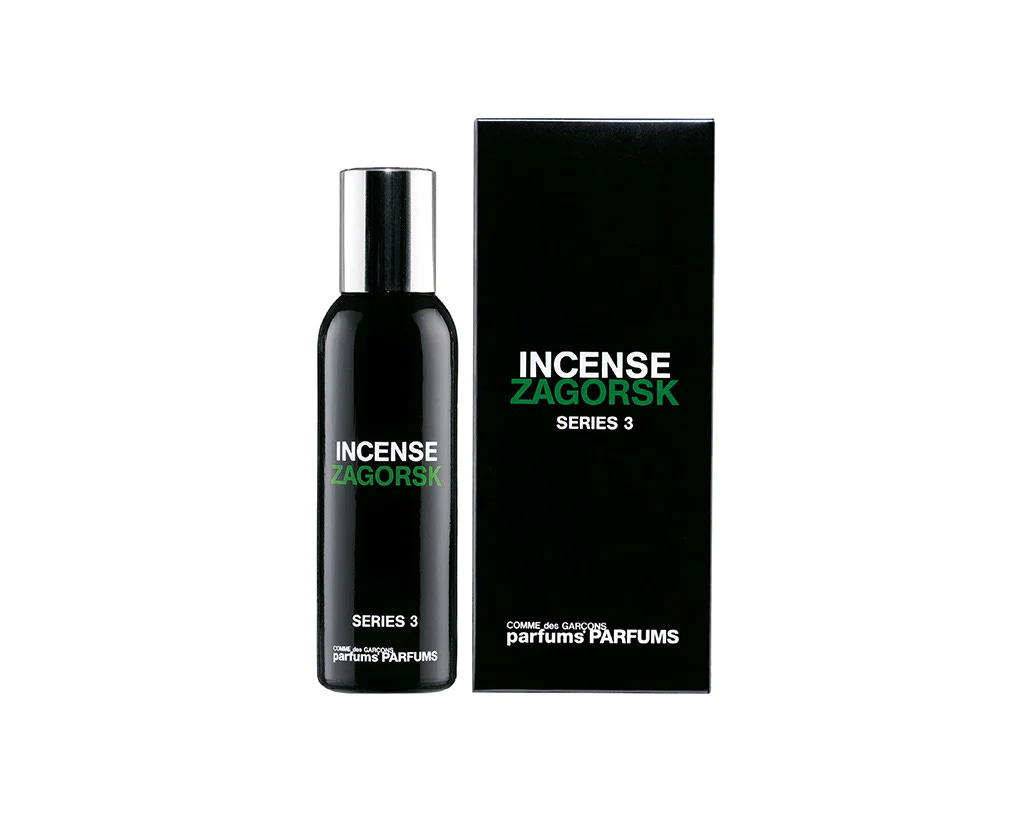
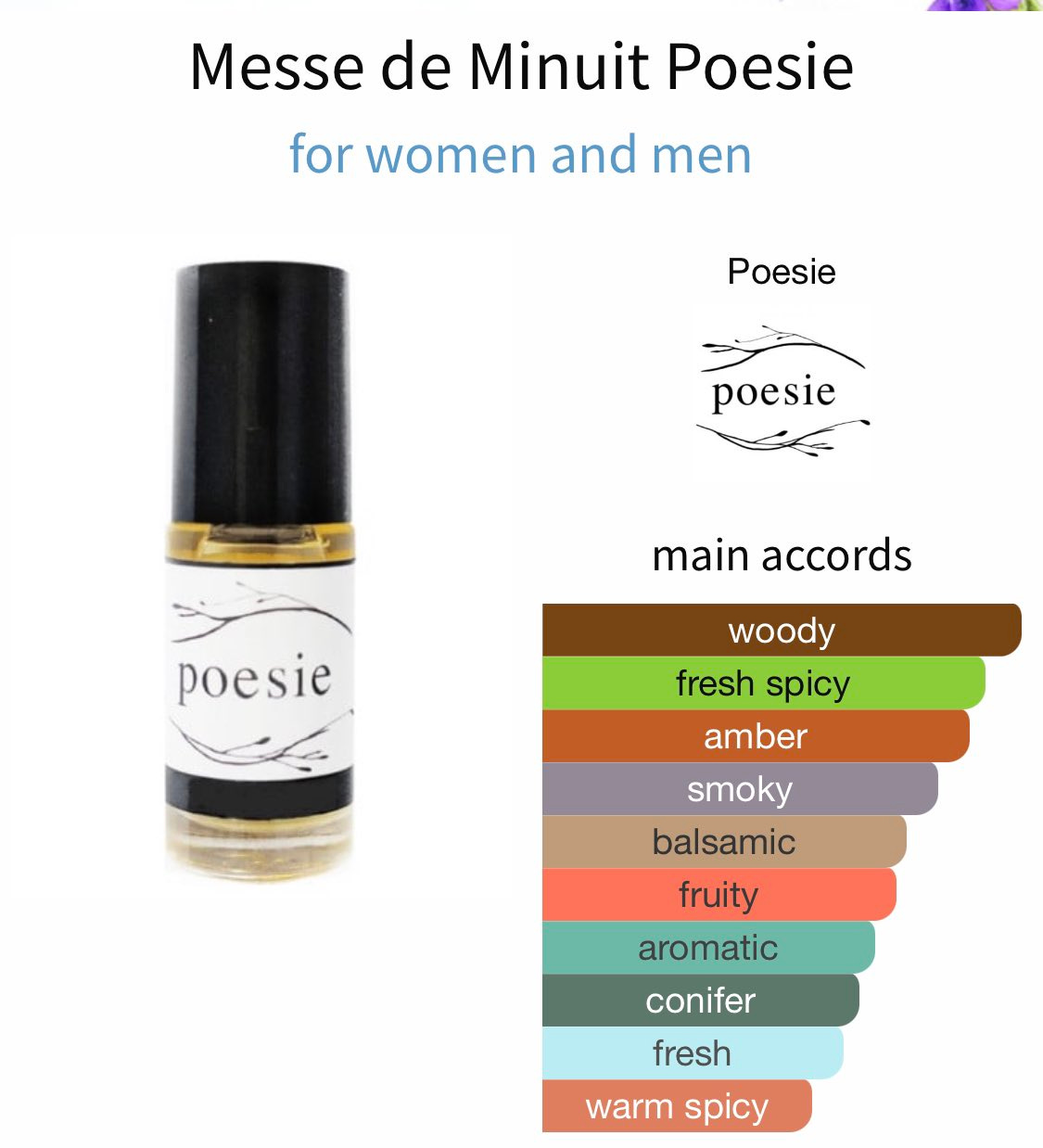
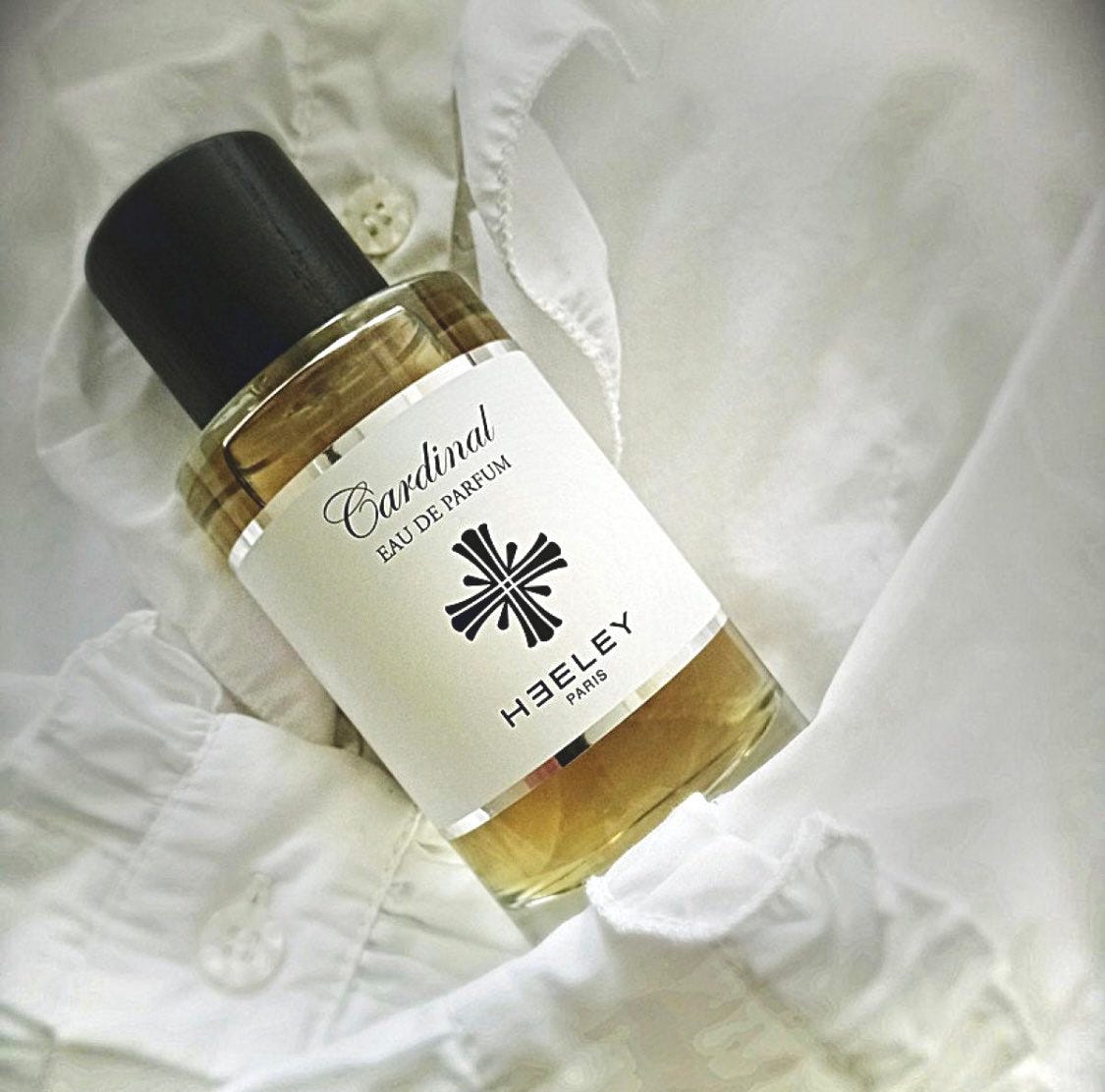
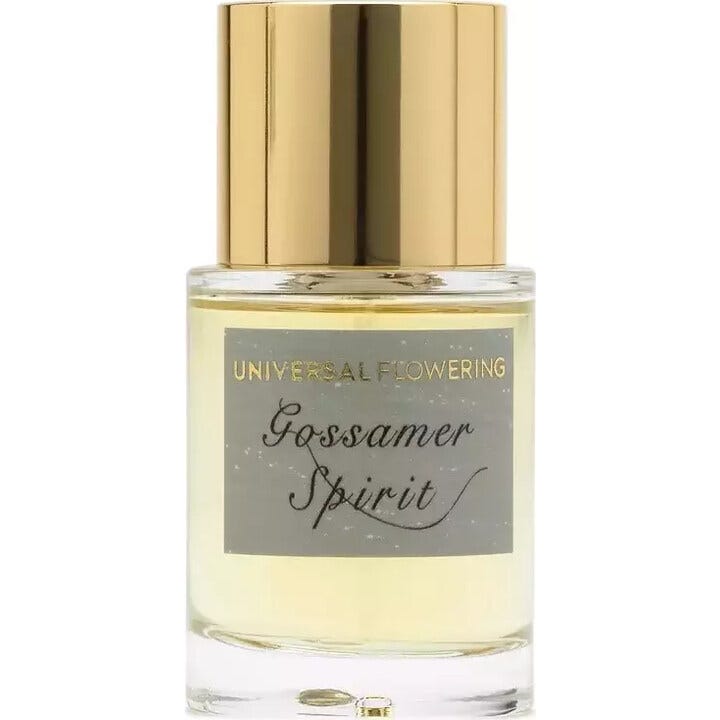
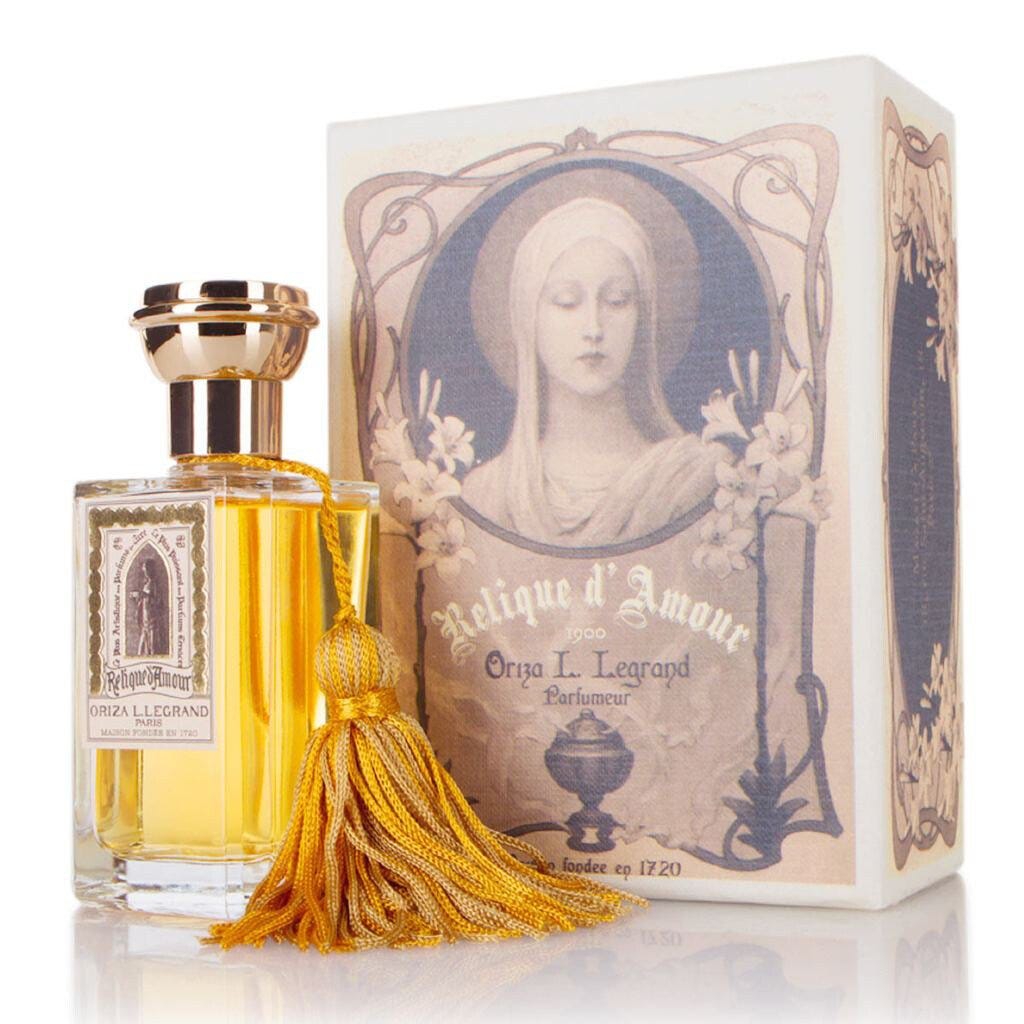
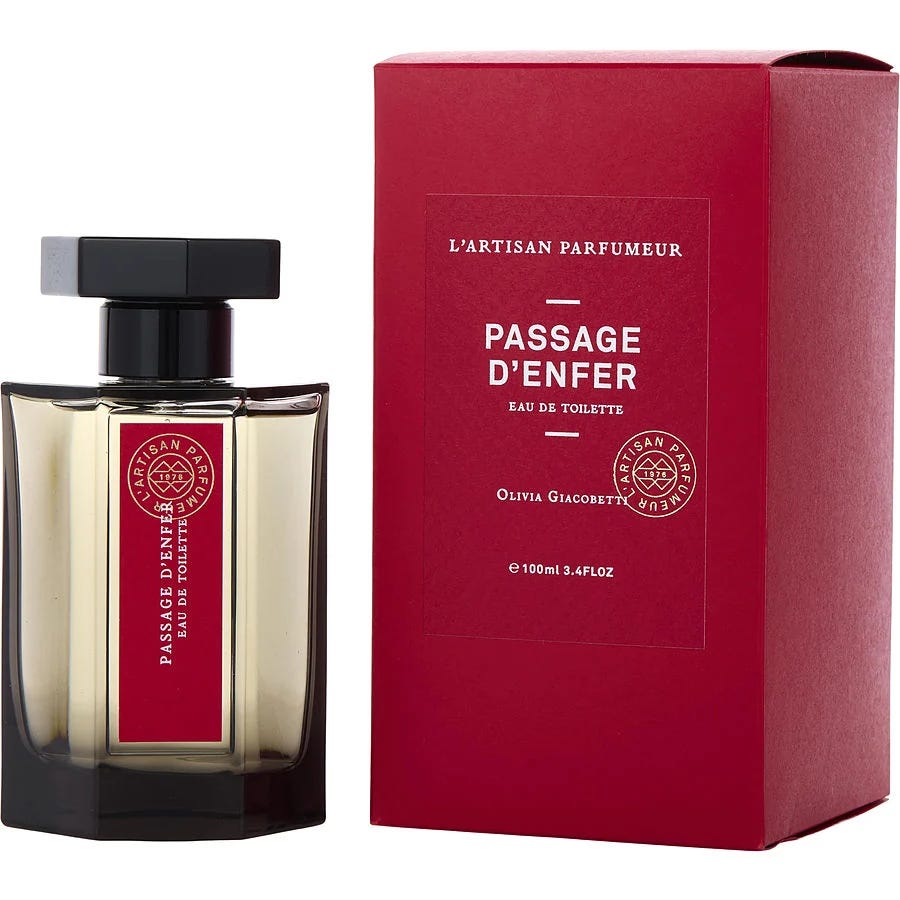
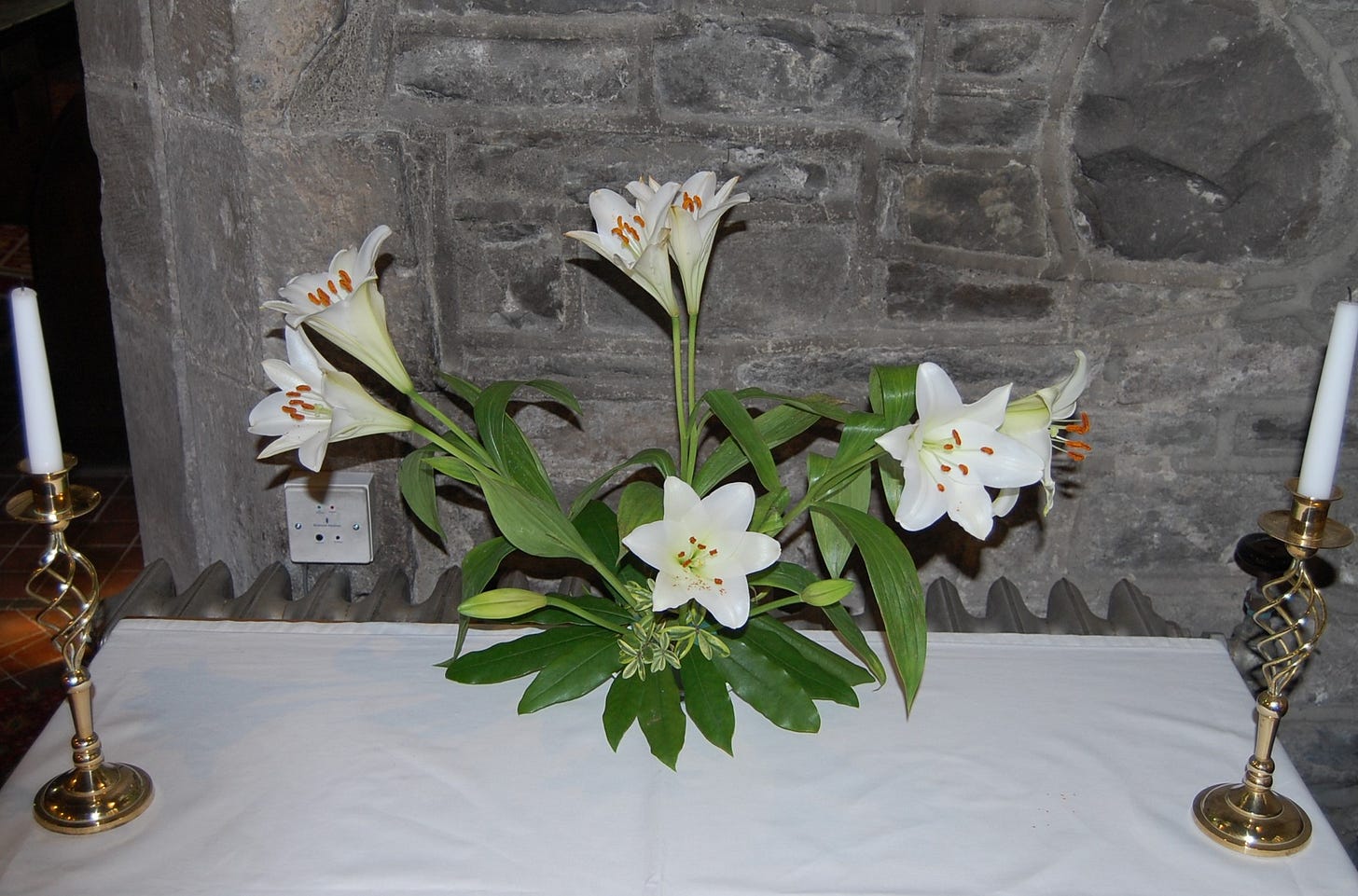





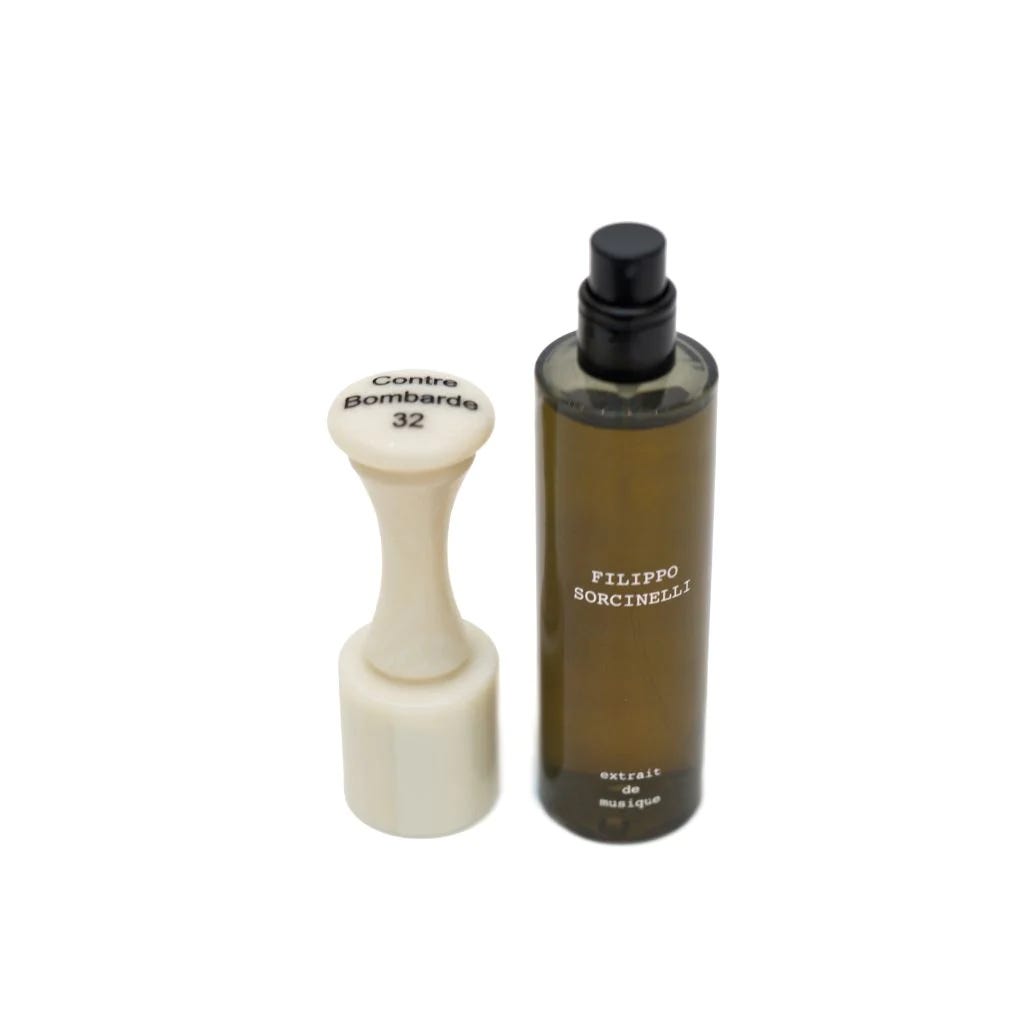
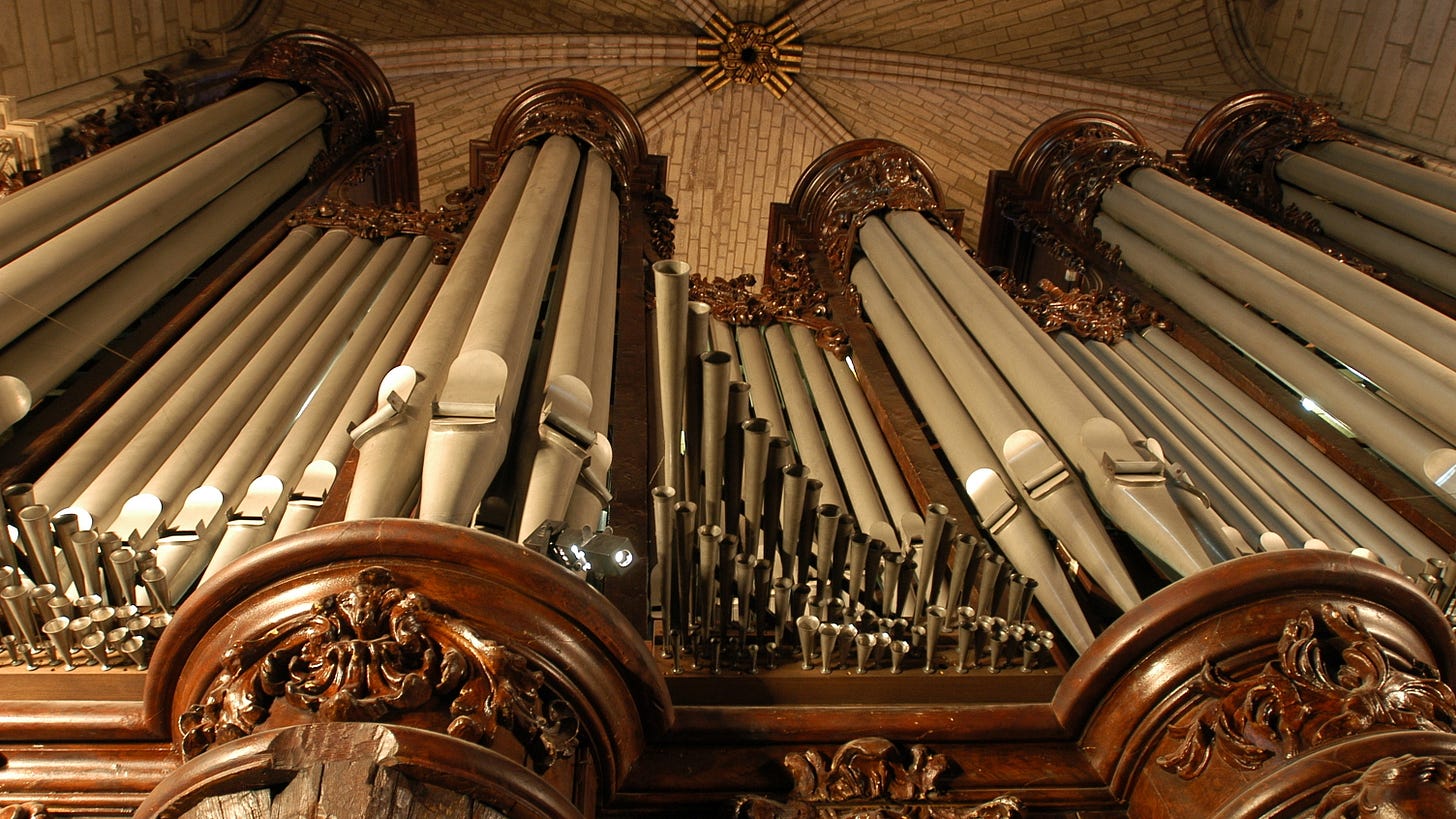




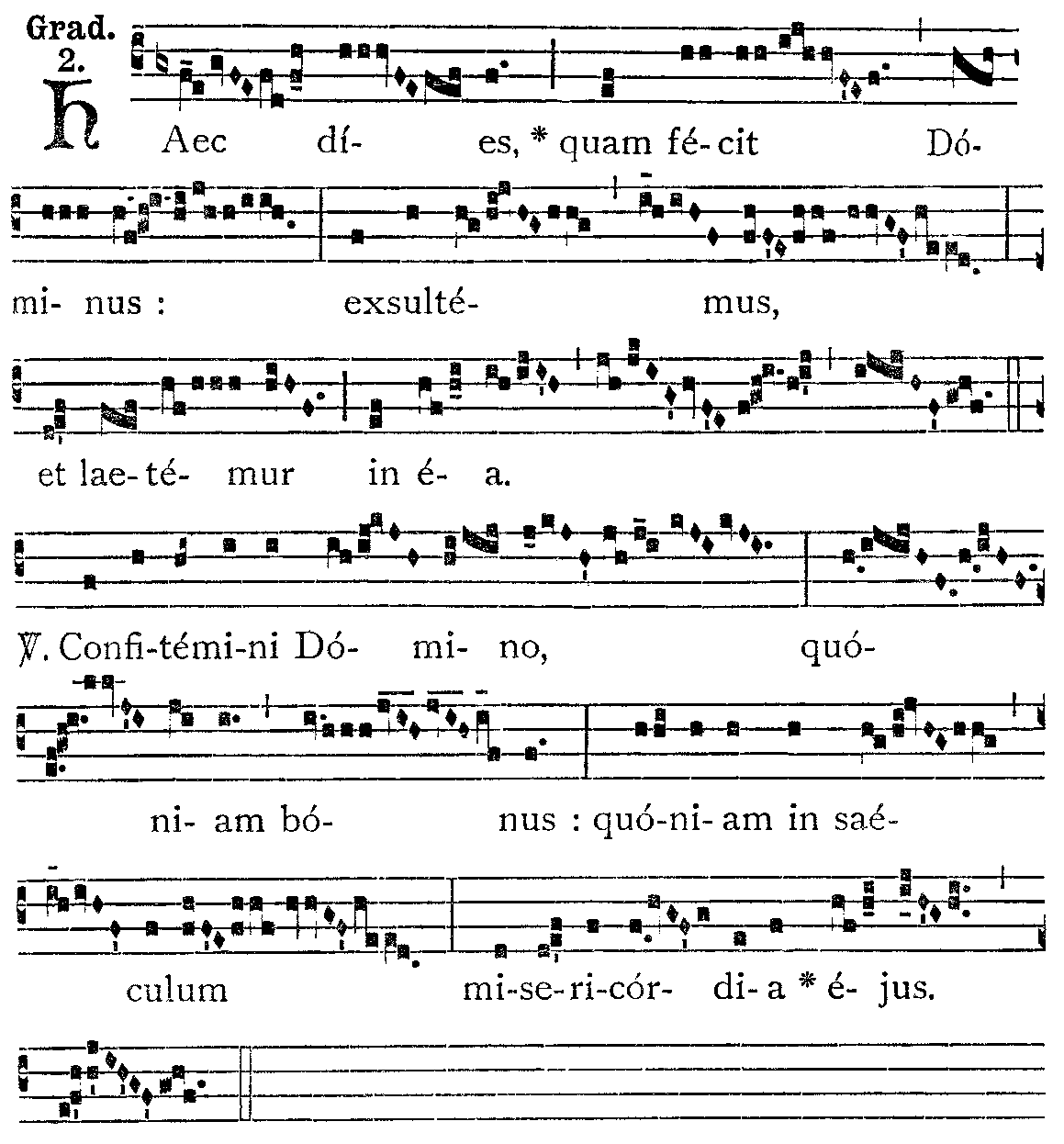
CDG Rouge to me is kinda what Zagorsk should have been. smells just like the tiny overgrown church that i used to go to when visiting my grandpas village in serbia, the muddy note feels like taking a walk early in the morning before the cold, damp mountain air and dew had a chance to evaporate
Church incense perfumes are my favorite category and your descriptions are so transportive, this list made my week. Have you smelled any of the chapel factory scents? Would be so curious to hear your thoughts